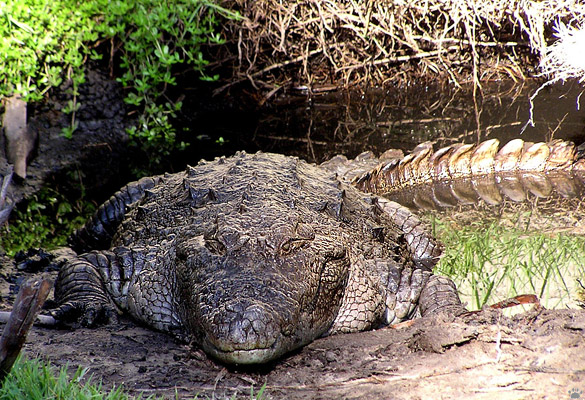
Mugger (Crocodylus palustris) at its burrow, Sasan Gir National Park, Gujarat, India.
Crocodiles part 17: Mugger
Mugger, also known as marsh crocodile, is a large (to over 5 m/17') species of the Indian Subcontinent. It once lived in almost every river and lake from southeastern Iran to western Myanmar. Now it is extinct in Myanmar and Bangladesh, and largely confined to Nature reserves in other countries. Reintroduction programs have been conducted in India, Nepal and Pakistan.
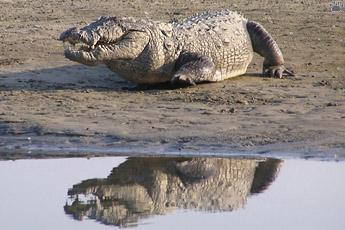 |
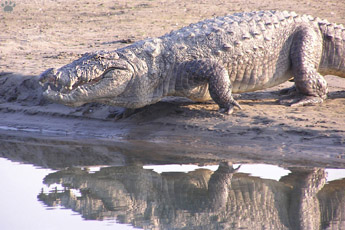 |
| Very large male mugger, Kateraniaghat Wildlife Sanctuary, Uttar Pradesh, India. |

Mugger, KWS, India. |
The largest surviving populations are in Sri Lanka and some National parks of India. |
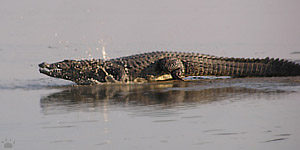
Mugger, KWS, India. |
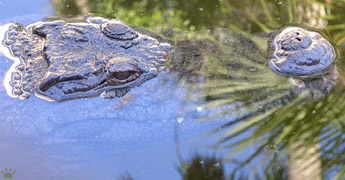
Mugger in a rainforest, Thattekkad Bird Sanctuary, Kerala, India. |

Mugger in search of water during the dry season, SGNP, India. |
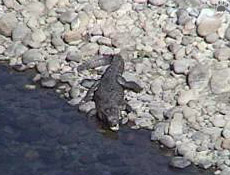
Mugger in a mountain river, Corbett National Park,
Uttarkhand, India. |
Muggers probably inhabit the most diverse habitats of any crocodilian species. They can be found in fast mountain rivers of the Himalayan foothills, rainforest swamps of Kerala, temporal lakes of Thar Desert, great rivers of Indo-Gangetic Plain, saltwater estuaries of Sri Lanka, and in stinking village ponds where they live on garbage. |
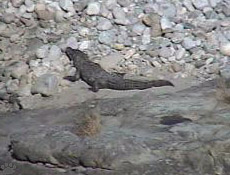
Mountain muggers have very strong tails.
CNP, India. |
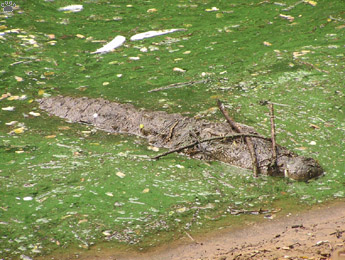
Muggers are masters of camouflage. SGNP, India. |
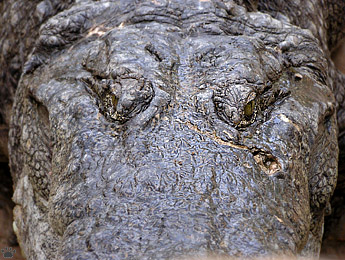
Old male mugger, Madras Crocodile Bank, Tamil Nadu, India. |

Mugger habitat, KWS, India. |
Muggers in the northern populations have to hibernate in winter, while in dry areas of the west they aestivate during the dry season (also in winter). Their long, complex burrows (up to 20 m/65' long) can later be used by all kinds of local wildlife. |
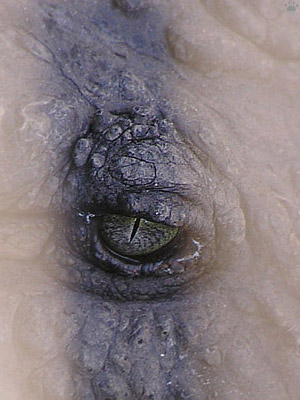
Mugger aestivating in a burrow, SGNP, India. |
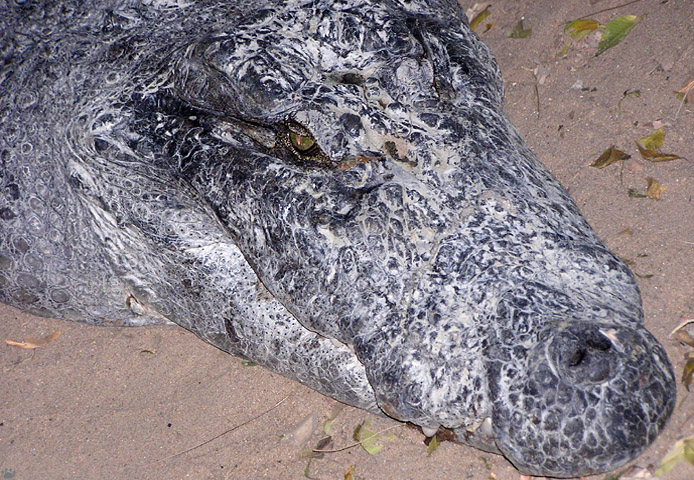
Mugger in a trailside ambush, SGNP, India. |
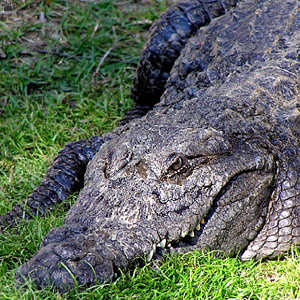
Mugger, KWS, India. |
Muggers hunt anything they can find in the water. Like American alligators, they often spend long night hours at the edge of forest trails, apparently in ambush. But attacks on humans are relatively rare. |
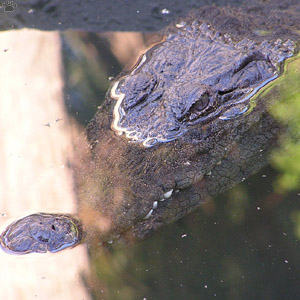
Mugger, TBS, India. |

Mugger roaring in arched-back posture, MCB, India. |
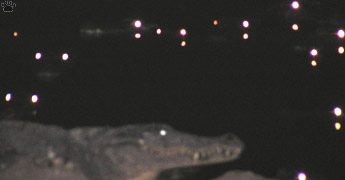
Mugger courtship at night, KWS, India. |
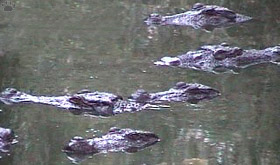
Mugger courtship, SGNP, India. |
Muggers mate in winter or early spring, often on very cold nights. At that time they are highly social. Males are territorial; they produce loud roars and infrasounds. |
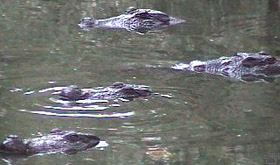
Mugger courtship, SGNP, India. |
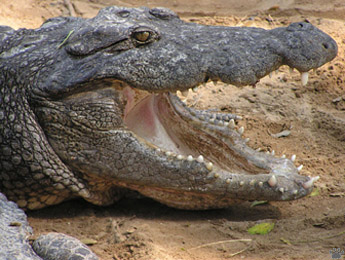 |
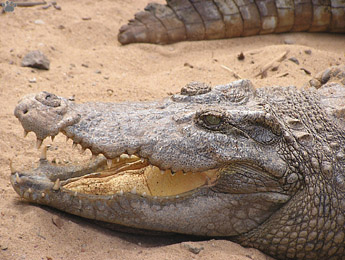 |
| Muggers roaring (left) and hissing, SGNP, India. |
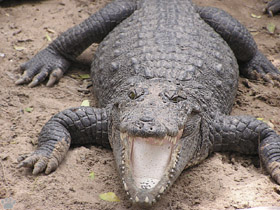 |
Mugger courtship is fascinating to watch. Females are sexually liberated and active. In the photo sequence shown here, they respond to a male roar (left). One, then another female approaches him. |
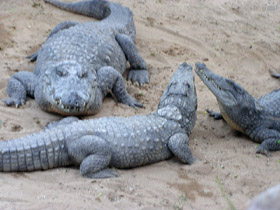 |
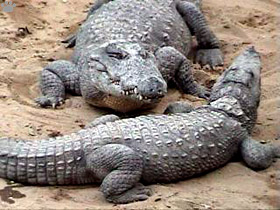 |
They briefly fight (upper right), then decide to caress him together (middle right). A moment later they are joined by a third girl (bottom right). I guess that male is a Playcroc magazine editor. |
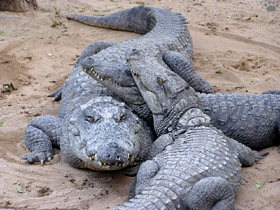 |
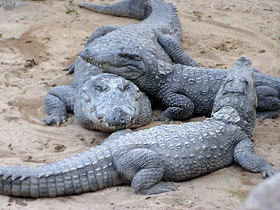
Mugger foursome, MCB, India. |
It is common among female crocs to openly solicit male attention, but I haven't seen such a popular male before. Another treat of studying muggers was listening to them roar in response to roaring lions in Gir. |
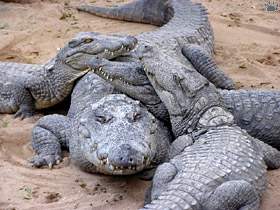
Mugger foursome, MCB, India. |
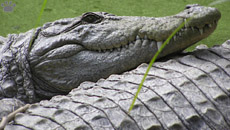 |
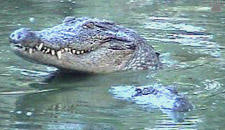
Muggers in love, SGNP, India. |
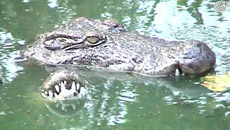 |
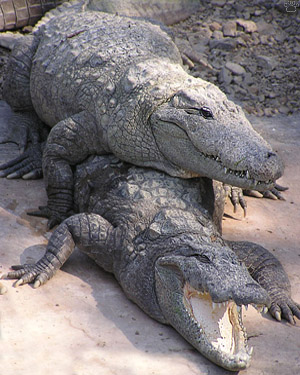
Muggers mating, SGNP, India. |
A relatively terrestrial species, mugger is the only crocodile known to regularly mate on land. The photo on the left (taken in Sasan Gir National Park) is apparently the first documented evidence of such behavior in the wild. |
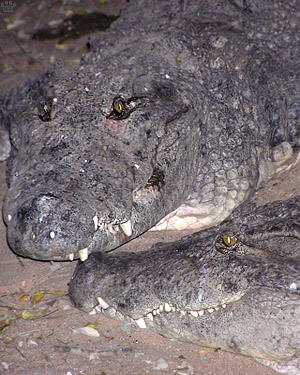
Muggers on a nighttime date, SGNP, India. |

Female mugger guarding her nest, Royal Chitwan National Park, Nepal. |
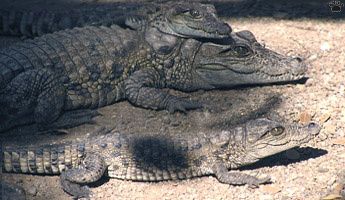
Juvenile muggers, SGNP, India. |
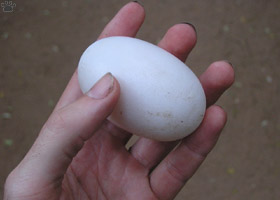
Mugger egg, MCB, India. |
Muggers usually nest in holes dug in river banks. Males have been observed to guard the nest and carry hatchlings to the water if the female was absent. Juveniles reach maturity in 6-10 years. |
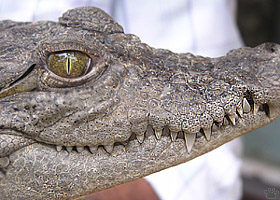
Juvenile mugger, MCB, India. |

Both lions and muggers in Sasan Gir National Park roar around the time of sunrise. Gujarat, India. |
Part 18: Saltwater crocodile
Back to Part 16
Home
|